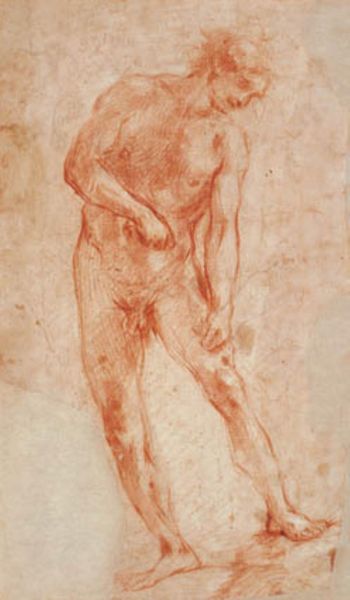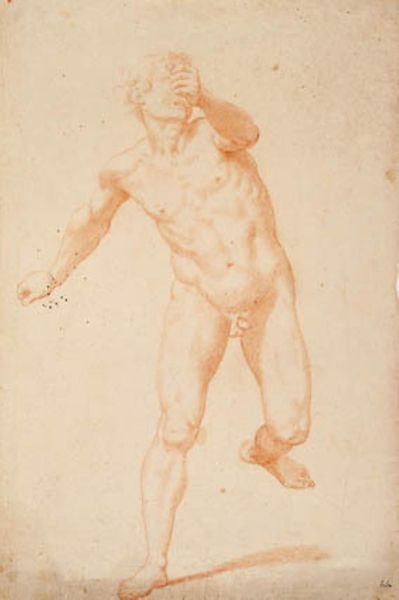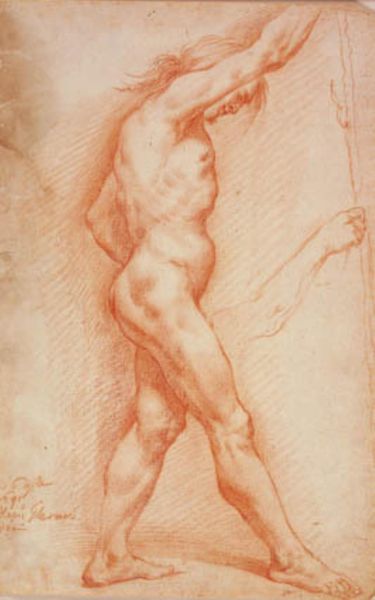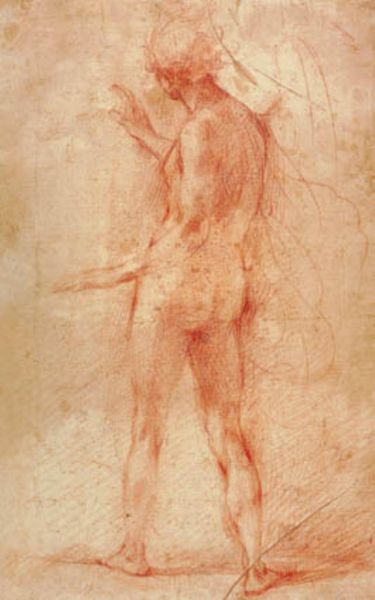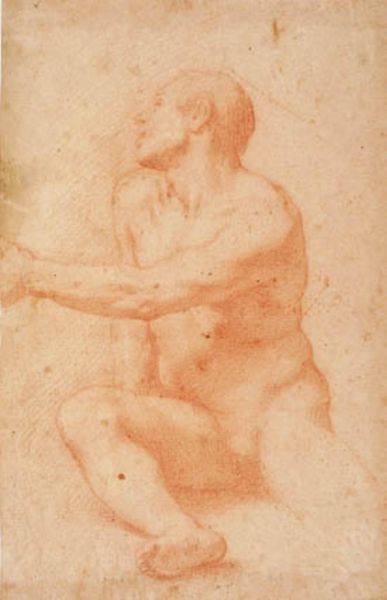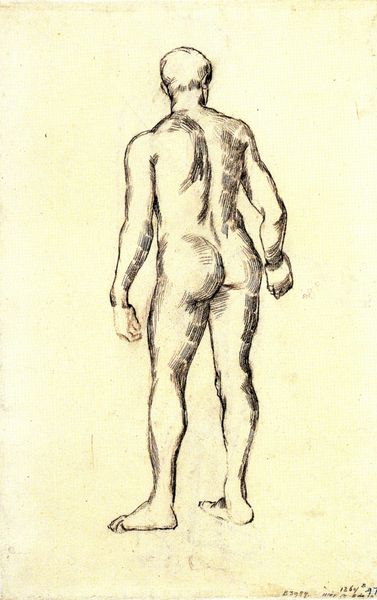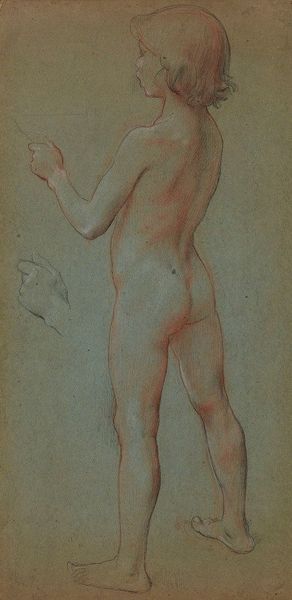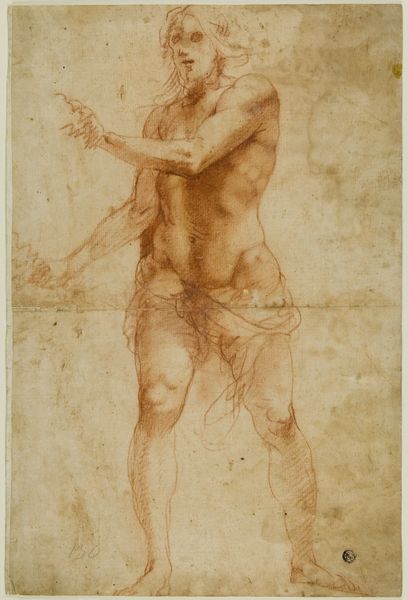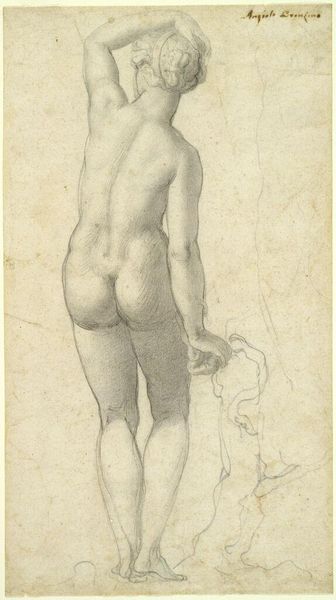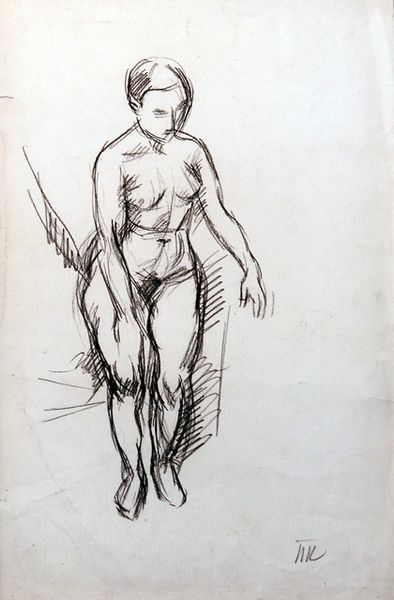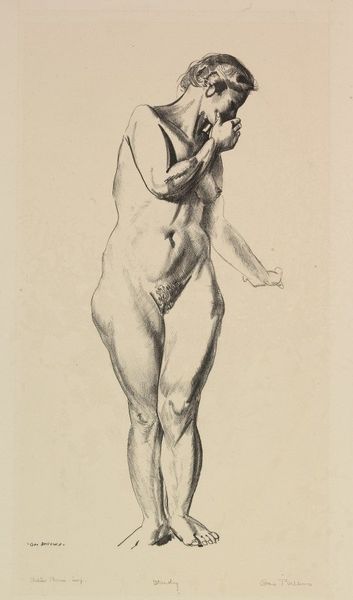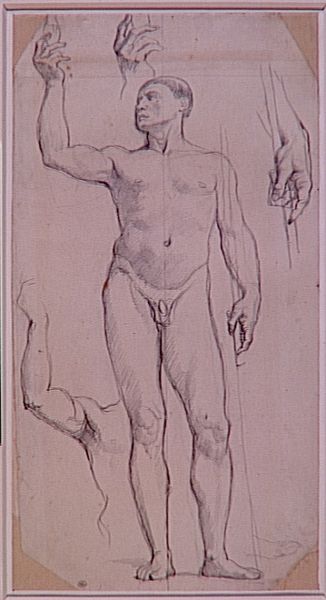
drawing, charcoal
#
drawing
#
charcoal drawing
#
figuration
#
11_renaissance
#
oil painting
#
charcoal
#
history-painting
#
nude
Dimensions: 286 mm (height) x 138 mm (width) (bladmaal)
Curator: At first glance, the figure seems frozen mid-flight, impossibly balanced on what appears to be a breath of air. Editor: We’re looking at “The Medici Mercury after Giambologna”, a drawing likely created sometime between 1692 and 1775. It’s currently held here at the SMK, and rendered in charcoal. What do you make of this classical depiction of the god? Curator: The drawing presents Mercury, messenger of the gods, as a dynamic, almost theatrical figure. His gesture is confident, directing our gaze upward. One really sees the enduring influence of the Renaissance focus on the ideal human form. Editor: The confident, somewhat aloof air is definitely a product of its time. The overt idealization of the nude form served to perpetuate power dynamics – associating divinity, beauty, and a specific type of masculinity. It’s hard to ignore that history. Curator: True. It's also fascinating to consider the reproduction and adaptation. This isn’t an original sculpture but a drawing *after* Giambologna’s iconic Mercury. That speaks to the role of drawings in disseminating and popularizing artistic ideas across Europe at the time. These images played a key part in establishing artistic trends. Editor: So the circulation of images like these shaped a visual culture… that’s compelling, but what gets to me is the tension in the figure itself. There's an inherent paradox in depicting such dynamic motion with the static medium of charcoal. Curator: Yes, and charcoal offers the opportunity for detailed and expressive work. It highlights the technical skills valued by the Academies, as young artists studied master works. Editor: Absolutely. I guess understanding this drawing really becomes a process of layering different contexts. The myth, the moment of its creation, and its long afterlife as a symbol. Curator: Yes, the art historical context provides so many insights into the artistic practices of the period. Editor: It does leave you to think about the choices that resonate—and why. Curator: Indeed. Every element points toward a complex conversation about canonization.
Comments
No comments
Be the first to comment and join the conversation on the ultimate creative platform.
